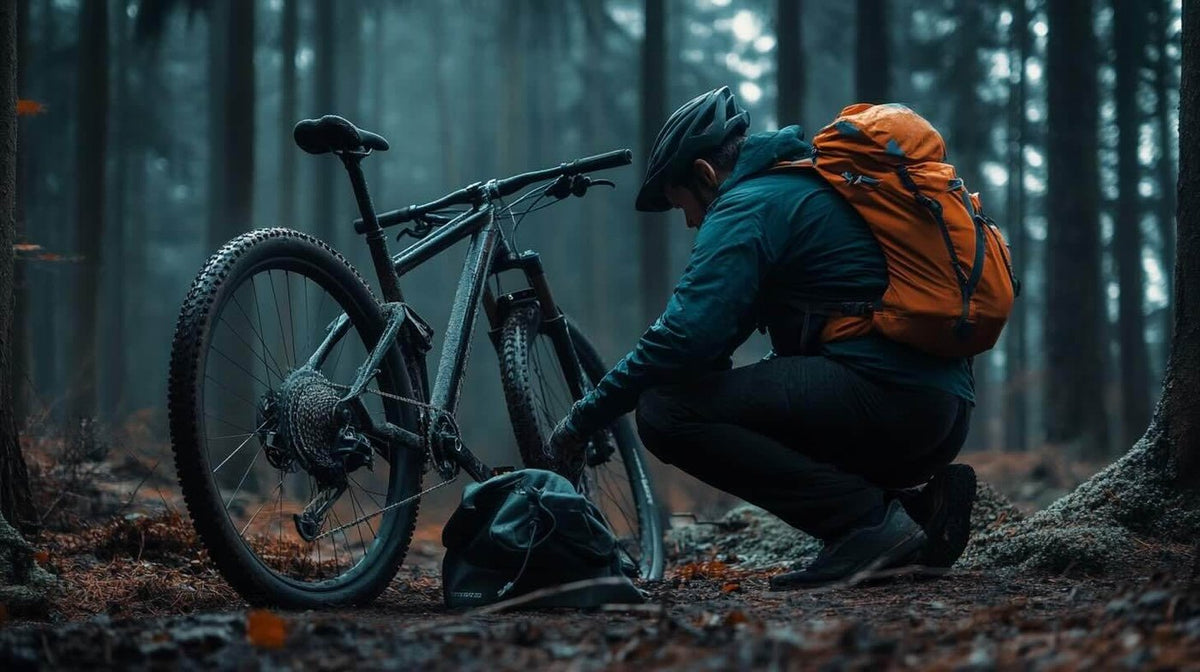
Quelle pression de pneu pour un vélo ? Guide complet du cycliste
|
|
Temps de lecture 4 min
|
|
Temps de lecture 4 min
La pression des pneus est essentielle à l'entretien d'un vélo. Cependant, la question « à quelle pression ? » ne se pose pas de manière universelle. Votre pression idéale dépend du type de vélo que vous utilisez, de votre poids, du terrain, de votre style de conduite et même de la saison. Dans ce guide, nous vous expliquerons comment ajuster la pression des pneus de vos vélos de route, VTT, hybrides et autres, afin d'obtenir l'équilibre parfait entre vitesse, adhérence et confort.
Table des matières
Vélos de route (pneus 23-28c) : La pression est généralement comprise entre 80 et 120 psi. Les cyclistes plus légers peuvent descendre jusqu'à 80 psi, tandis que les cyclistes plus lourds préféreront la plage supérieure.
Vélos Gravel (35-45c) : Nécessitent généralement 40 à 60 PSI pour le confort et le contrôle sur un terrain mixte.
Vélos de montagne (pneus de 2,1 à 2,4 pouces) : la plupart des cyclistes de VTT utilisent 25 à 35 PSI, selon les conditions et la configuration du vélo.
Vélos hybrides (28-42c) : se situent quelque part entre les vélos de route et les vélos de gravier, généralement 50-70 PSI.
Vérifiez toujours le flanc de votre pneu pour connaître la plage PSI recommandée et ne dépassez jamais la valeur nominale maximale.
Course ou compétition : visez la limite supérieure de la plage PSI pour réduire la résistance au roulement et améliorer la vitesse.
Utilisation longue distance ou récréative : réduisez légèrement le PSI pour plus de confort et moins de fatigue.
Sentiers tout-terrain ou techniques : Réduisez la pression pour améliorer l'adhérence et l'absorption des chocs (en particulier les pneus VTT).
Utilisez cette formule de base comme point de départ :
PSI de base + (poids du cycliste en kg ÷ 10) × 1,5
Exemple : un cycliste de 70 kg utilisant une base de 60 psi gonflerait le vélo à environ 70 psi. Ajoutez 3 à 5 psi pour chaque tranche de 10 kg de chargement ou de sacoches.
Les pneus tubeless vous permettent de rouler à une pression inférieure de 5 à 15 PSI sans risquer de crevaison par pincement.
Vous aurez besoin de produit d'étanchéité et d'une jante bien ajustée. Pour une explication complète, consultez notre guide sur le gonflage des pneus de vélo tubeless .
Vérifiez régulièrement les pertes d'air et faites l'appoint si nécessaire.
Temps chaud : l'air se dilate, évitez de gonfler au maximum en PSI en été.
Temps froid : l'air est comprimé : vérifiez la pression chaque semaine et attendez-vous à une baisse de 1 à 2 PSI par 10 °C.
Haute altitude : attendez-vous à une maniabilité différente ; testez et ajustez le PSI après les montées ou les déplacements.
Test du pouce : les pneus de route doivent être fermes ; les pneus de VTT doivent se comprimer légèrement (~ 5 mm).
Zone de contact : Après chaque sortie, inspectez l'empreinte du pneu. Une ligne centrale fine signifie surgonflage. Une ligne trop large signifie sous-gonflage.
Les approximations ne suffisent pas, surtout lorsque la performance et la sécurité sont en jeu. Le Woowind BP188 délivre jusqu'à 120 PSI grâce à un contrôle numérique précis, vous permettant de régler la pression idéale pour votre trajet.
Besoin d'une pompe polyvalente pour tous vos vélos ? Découvrez notre collection complète de pompes à air électriques .
Vérifiez la pression des pneus chaque semaine (plus souvent en hiver).
Ajustez toujours le PSI avant de longs trajets ou des changements de terrain.
Enregistrez votre PSI avant et arrière optimal une fois réglé.
Pour plus de techniques de gonflage, visitez notre guide de gonflage des pneus de vélo .
Généralement entre 80 et 120 PSI. À ajuster en fonction de votre poids et de votre confort ; les cyclistes plus légers peuvent descendre plus bas.
Au moins une fois par semaine, ou avant toute sortie longue ou rapide. Par temps froid, des contrôles plus fréquents sont nécessaires.
En général, le pneu arrière nécessite une pression de 3 à 5 PSI supplémentaire en raison de la répartition du poids. Ajustez en conséquence.
Vous pouvez baisser de 5 à 15 PSI par rapport aux pneus à chambre à air pour une meilleure adhérence et un meilleur confort. Surveillez simplement le produit d'étanchéité et les pertes d'air.
Trop souple = tenue de route lente ; trop dur = conduite difficile. Vérifiez la surface de contact ou utilisez le test du pouce.